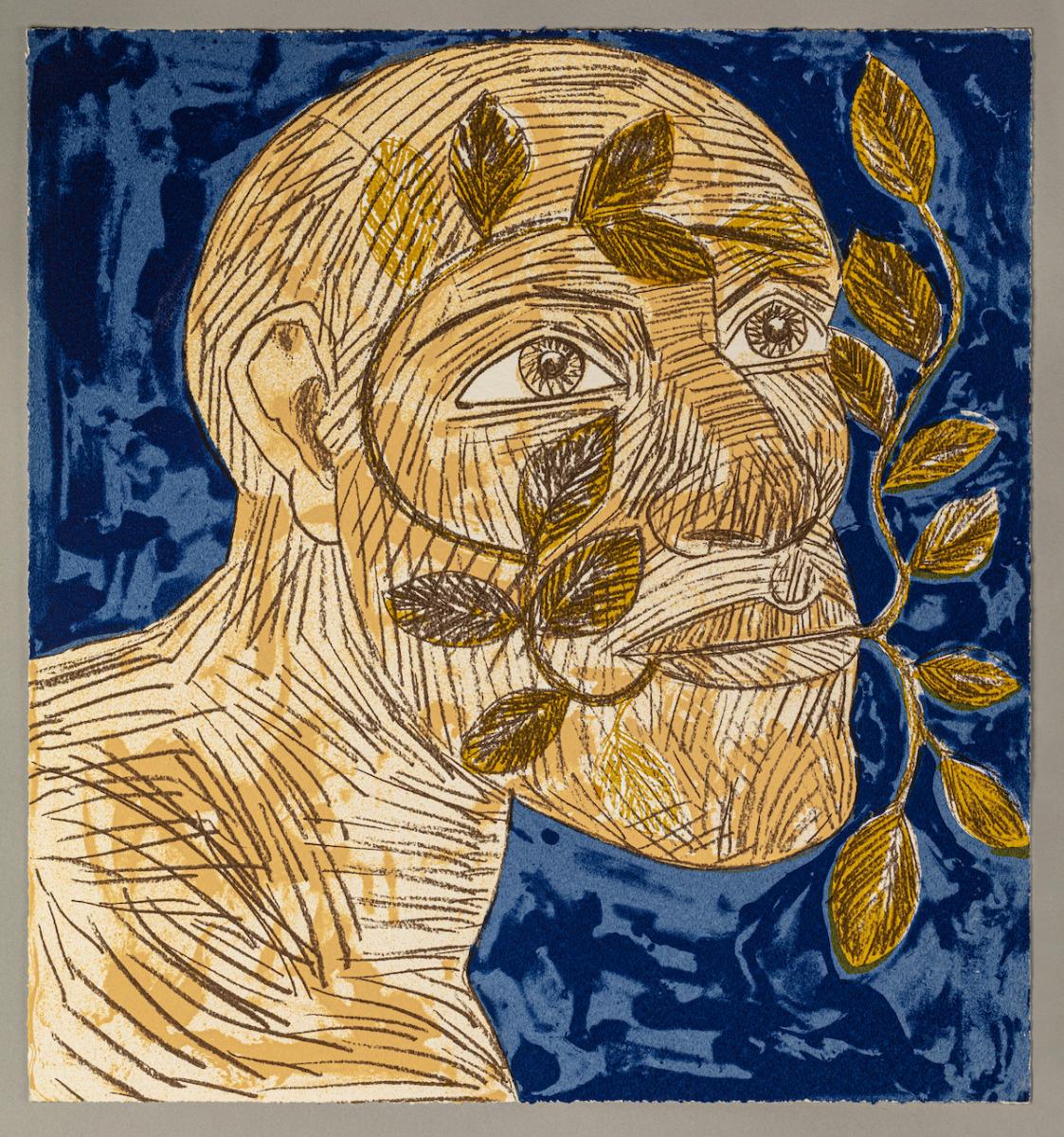This wonderful Cornish workshop and museum is dedicated to the legacy of studio pottery trailblazer Bernard Leach
Discover the story behind Elisabeth Frink’s Green Man (blue)
Discover the story behind Elisabeth Frink’s Green Man (blue)
12 Mar 2024
Elisabeth Frink’s Green Man (blue) has links to spring and rebirth. The work also speaks, says Frink expert Annette Ratuszniak, of a key time in the artist’s life
 Dorset Museum Collection 2020.1.173/Artist copyright in image kindly approved by Tully and Bree Jammet
Dorset Museum Collection 2020.1.173/Artist copyright in image kindly approved by Tully and Bree Jammet
British sculptor Elisabeth Frink RA (1930–93) used the image of a head as a way to express her feelings about humanity. The impetus for her artwork was the tension between aggression and vulnerability.
This 1992 screenprint, Green Man (blue), is based on an ancient architectural motif, the Green Man, a symbol of rebirth that occurs across many cultures. Frink imbues it with a modernity and vitality through powerful drawn marks, colour and the figure’s unflinching gaze.
The screenprints for this were started at Woolland in Dorset, Frink’s home. Master printer Kip Gresham, Curwen Chilford Press, took materials to Frink’s studio. There she drew with graphite and dilute colour washes onto a surface from which Gresham made proofs and final prints in an edition of 70.
Why the Green Man?
Frink was diagnosed with cancer in 1991 and while undergoing treatment was given a copy of Green Man: The Archetype of Our Oneness with the Earth by William Anderson. Ideas of regeneration and rebirth gave her hope and direction for new artworks. The idea of the head as a vessel for feelings dated to her early career. In the 1950s she had made abstract animal heads, where a gaping mouth or bared teeth, a nostril or eye socket expressed a life force. These sculptures blurred the line between violence and defencelessness. This duality within a head continued in her work: brutish soldiers depicted as scarred victims; aggressors hiding behind reflective goggles; survivors of oppression portrayed with heroic dignity. Resilience of the human spirit as a theme culminated in monumental heads with an introspective, enigmatic presence.
Expressive marks
Frink’s drawings were large, spilling across sheets of paper, onto walls, even windows. They were the way through which she gathered thoughts for a sculpture. Then, using wet plaster, incorporating scraps of hessian, paper, wire and wood, refining surfaces, an image that embodied her deepest feelings would emerge. Her changing drawing styles reflect her experimental approach to working with plaster. From her studio she saw chalk downland and was absorbed by the marks revealed by light and shadows. Drawings came alive with rhythms of dynamic lines, as seen here. Sculptures from this period are also defined by marks and incisions, achieved by carving plaster that she had allowed to set hard.
Strong colour
Frink drew four heads with foliage spreading out from the mouth for the Green Man series. Washes of colour, lines and profiles vary, as does background hue. At home Frink surrounded herself with material from other cultures: painted furniture, ceramics, textiles and wooden artefacts. Rich, earthy colour entered her drawings and then her sculpture, inspired by a visit in 1986 to Alice Springs and Uluru, where she bought examples of Australian Indigenous art.
Gaze and discover
Although she rarely drew from life, Frink constantly observed people and animals. Holding these in her memory, she would draw upon shapes, gestures and expressions. She gave great attention to eyes, which in her hands were never formulaic. In 2017 we unpacked Frink’s artworks, plasters, studio materials and archive, which had been stored following her death. We discovered many of her lost original plasters, including her Green Man, whose eyes, now fragile, held our gaze.
SEE
Elisabeth Frink: A View from Within
Dorset Museum & Art
Gallery; until 21 April 2024
FOR MORE
Frink’s son, Lin Jammet, left the Frink Estate to the nation. Since 2022 it can be found in 12 museums across England, Scotland and Northern Ireland. Dorset Museum & Art Gallery has more than 400 artworks, including her Green Man screenprints, drawings and bronze sculpture.
About the Author
Annette Ratuszniak
is an art historian and former curator of the Elisabeth Frink Estate and Archive
JOIN OUR MAILING LIST
Become an instant expert!
Find out more about the arts by becoming a Supporter of The Arts Society.
For just £20 a year you will receive invitations to exclusive member events and courses, special offers and concessions, our regular newsletter and our beautiful arts magazine, full of news, views, events and artist profiles.
FIND YOUR NEAREST SOCIETY
MORE FEATURES
Ever wanted to write a crime novel? As Britain’s annual crime writing festival opens, we uncover some top leads
It’s just 10 days until the Summer Olympic Games open in Paris. To mark the moment, Simon Inglis reveals how art and design play a key part in this, the world’s most spectacular multi-sport competition



